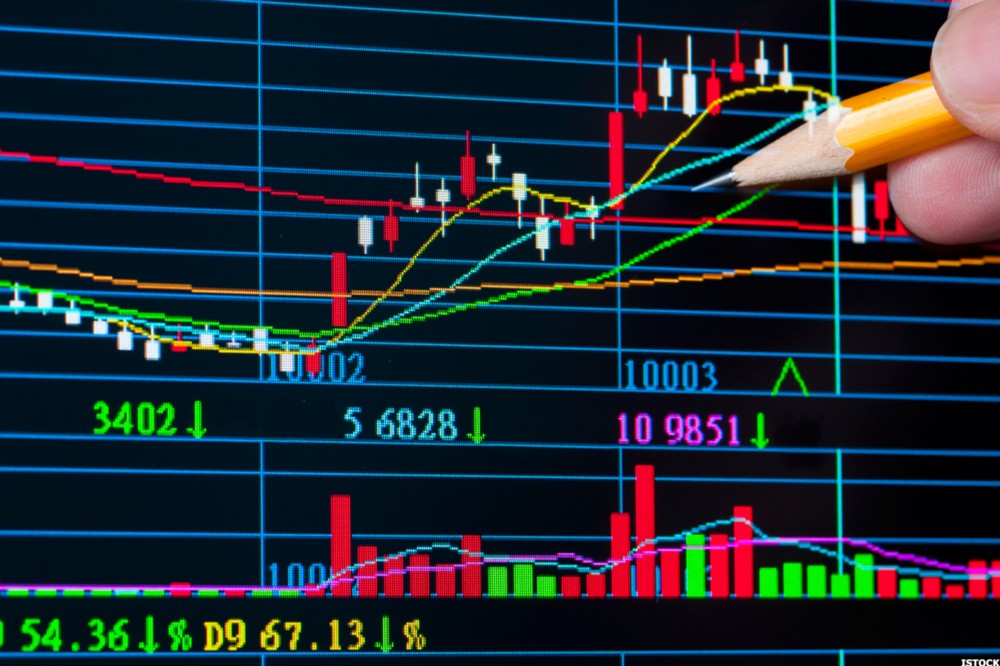
Technical analysis is a trading discipline employed to evaluate investments and identify trading opportunities by analyzing statistical trends gathered from trading activity, such as price movement and volume.
 Unlike fundamental analysis, which attempts to evaluate a security’s value based on business results such as sales and earnings, technical analysis focuses on the study or price and volume. Technical analysis tools are used to scrutinize the ways supply and demand for a security will affect changes in price, volume and implied volatility. Technical analysis is often used to generate short-term trading signals from various charting tools, but can also help improve the evaluation of a security’s strength or weakness relative to the broader market or one of its sectors. This information helps analysts improve there overall valuation estimate.
Unlike fundamental analysis, which attempts to evaluate a security’s value based on business results such as sales and earnings, technical analysis focuses on the study or price and volume. Technical analysis tools are used to scrutinize the ways supply and demand for a security will affect changes in price, volume and implied volatility. Technical analysis is often used to generate short-term trading signals from various charting tools, but can also help improve the evaluation of a security’s strength or weakness relative to the broader market or one of its sectors. This information helps analysts improve there overall valuation estimate.
Technical analysis can be used on any security with historical trading data. This includes stocks, futures, commodities, fixed-income, currencies, and other securities. In this tutorial, we’ll usually analyze stocks in our examples, but keep in mind that these concepts can be applied to any type of security. In fact, technical analysis is far more prevalent in commodities and forex markets where traders focus on short-term price movements.
The basics of technical analysis
Technical analysis as we know it today was first introduced by Charles Dow and the Dow Theory in the late 1800s. Several noteworthy researchers including William P. Hamilton, Robert Rhea, Edson Gould, and John Magee further contributed to Dow Theory concepts helping to form its basis. In modern day, technical analysis has evolved to included hundreds of patterns and signals developed through years of research.
Technical analysis operates from the assumption that past trading activity and price changes of a security can be valuable indicators of the security’s future price movements when paired with appropriate investing or trading rules. Professional analysts often use technical analysis in conjunction with other forms of research. Retail traders may make decisions based solely on the price charts of a security and similar statistics, but practicing equity analysts rarely limit their research to fundamental or technical analysis alone.
Among professional analysts, the CMT Association supports the largest collection of chartered or certified analysts using technical analysis professionally around the world. The association’s Chartered Market Technician (CMT) designation can be obtained after three levels of exams that cover both a broad and deep look at technical analysis tools. Nearly one third of CMT charter holders are also Certified Financial Analyst (CFA) charter holders. This demonstrates how well the two disciplines reinforce each other.
Assumptions of technical analysis
There are two primary methods used to analyze securities and make investment decisions: fundamental analysis and technical analysis. Fundamental analysis involves analyzing a company’s financial statements to determine the fair value of the business, while technical analysis assumes that a security’s price already reflects all publicly-available information and instead focuses on the statistical analysis of price movements. Technical analysis attempts to understand the market sentiment behind price trends by looking for patterns and trends rather than analyzing a security’s fundamental attributes.
Charles Dow released a series of editorials discussing technical analysis theory. His writings included two basic assumptions that have continued to form the framework for technical analysis trading.
- Markets are efficient with values representing factors that influence a security’s price, but
- Even random market price movements appear to move in identifiable patterns and trends that tend to repeat over time.3
Today the field of technical analysis builds on Dow’s work. Professional analysts typically accept three general assumptions for the discipline:
1: The market discounts everything
Technical analysts believe that everything from a company’s fundamentals to broad market factors to market psychology are already priced into the stock. This point of view is congruent with the Efficient Markets Hypothesis (EMH) which assumes a similar conclusion about prices. The only thing remaining is the analysis of price movements, which technical analysts view as the product of supply and demand for a particular stock in the market.
2: Price moves in trends
Technical analysts expect that prices, even in random market movements, will exhibit trends regardless of the time frame being observed. In other words, a stock price is more likely to continue a past trend than move erratically. Most technical trading strategies are based on this assumption.
3: History tends to repeat itself
Technical analysts believe that history tends to repeat itself. The repetitive nature of price movements is often attributed to market psychology, which tends to be very predictable based on emotions like fear or excitement. Technical analysis uses chart patterns to analyze these emotions and subsequent market movements to understand trends. While many forms of technical analysis have been used for more than 100 years, they are still believed to be relevant because they illustrate patterns in price movements that often repeat themselves.
Use of technical analysis
Technical analysis attempts to forecast the price movement of virtually any tradable instrument that is generally subject to forces of supply and demand, including stocks, bonds, futures and currency pairs. In fact, some view technical analysis as simply the study of supply and demand forces as reflected in the market price movements of a security. Technical analysis most commonly applies to price changes, but some analysts track numbers other than just price, such as trading volume or open interest figures.
Across the industry there are hundreds of patterns and signals that have been developed by researchers to support technical analysis trading. Technical analysts have also developed numerous types of trading systems to help them forecast and trade on price movements. Some indicators are focused primarily on identifying the current market trend, including support and resistance areas, while others are focused on determining the strength of a trend and the likelihood of its continuation. Commonly used technical indicators and charting patterns include trend-lines, channels, moving averages and momentum indicators.
In general, technical analysts look at the following broad types of indicators:
- Price trends
- Chart patterns
- Volume and momentum indicators
- Oscillators
- Moving averages
- Support and resistance levels
The difference between technical analysis and fundamental analysis
Fundamental analysis and technical analysis, the major schools of thought when it comes to approaching the markets, are at opposite ends of the spectrum. Both methods are used for researching and forecasting future trends in stock prices, and like any investment strategy or philosophy, both have their advocates and adversaries.
Fundamental analysis is a method of evaluating securities by attempting to measure the intrinsic value of a stock. Fundamental analysts study everything from the overall economy and industry conditions to the financial condition and management of companies. Earnings, expenses, assets and liabilities are all important characteristics to fundamental analysts.
Technical analysis differs from fundamental analysis in that the stock’s price and volume are the only inputs. The core assumption is that all known fundamentals are factored into price; thus, there is no need to pay close attention to them. Technical analysts do not attempt to measure a security’s intrinsic value, but instead use stock charts to identify patterns and trends that suggest what a stock will do in the future.
Limitations of technical analysis
Some analysts and academic researchers expect that the EMH demonstrates why they shouldn’t expect any actionable information to be contained in historical price and volume data. However, by the same reasoning, neither should business fundamentals provide any actionable information. These points of view are known as the weak form and semi-strong form of the EMH.
Another criticism of technical analysis is that history does not repeat itself exactly, so price pattern study is of dubious importance and can be ignored. Prices seem to be better modeled by assuming a random walk.
A third criticism of technical analysis is that it works in some cases but only because it constitutes a self-fulfilling prophesy. For example, many technical traders will place a stop loss order below the 200-day moving average of a certain company. If a large number of traders have done so and the stock reaches this price, there will be a large number of sell orders, which will push the stock down, confirming the movement traders anticipated.
Then, other traders will see the price decrease and also sell their positions, reinforcing the strength of the trend. This short-term selling pressure can be considered self-fulfilling, but it will have little bearing on where the asset’s price will be weeks or months from now. In sum, if enough people use the same signals, they could cause the movement foretold by the signal, but over the long run this sole group of traders cannot drive price.
Financial and Business expert having 30+ Years of vast experience in running successful businesses and managing finance.





